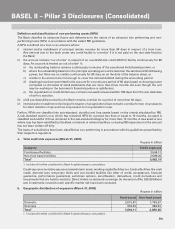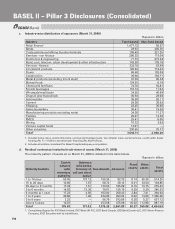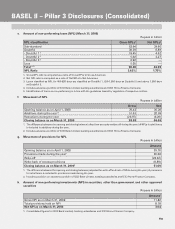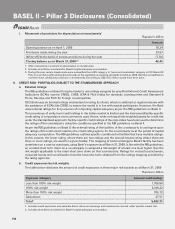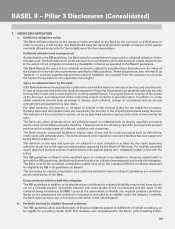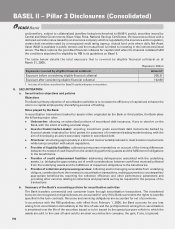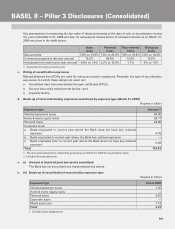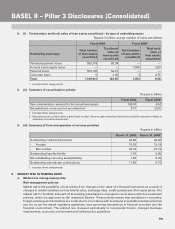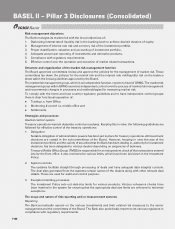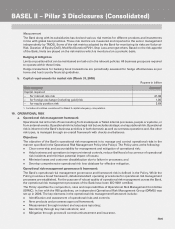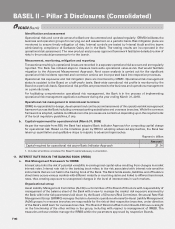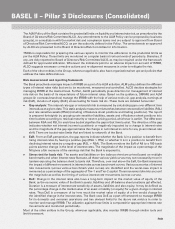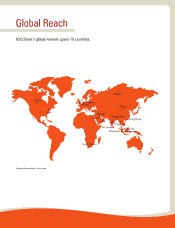ICICI Bank 2009 Annual Report Download - page 175
Download and view the complete annual report
Please find page 175 of the 2009 ICICI Bank annual report below. You can navigate through the pages in the report by either clicking on the pages listed below, or by using the keyword search tool below to find specific information within the annual report.
F101
Measurement
The Bank along with its subsidiaries has devised various risk metrics for different products and investments
in line with global best practices. These risk metrics are measured and reported to the senior management
independently by TMOG. Some of the risk metrics adopted by the Bank for monitoring its risks are Value-at-
Risk, Duration of Equity (DoE), Modified Duration/PV01, Stop Loss amongst others. Based on the risk appetite
of the Bank, limits are placed on the risk metrics which is monitored on a periodic basis.
Hedging & mitigation
Limits on positions that can be maintained are laid out in the relevant policies. All business groups are required
to operate within these limits.
Hedge transactions for banking book transactions are periodically assessed for hedge effectiveness as per
home and host country financial guidelines.
b. Capital requirements for market risk (March 31, 2009)
Rupees in billion
Risk category Amount1
Capital required
– for interest rate risk 41.38
– for foreign exchange (including gold) risk 1.06
– for equity position risk 3.69
1. Includes all entities considered for Basel II capital adequacy computation.
10. OPERATIONAL RISK
a. Operational risk management framework
Operational risk is the risk of loss resulting from inadequate or failed internal processes, people or systems, or
from external events. Operational risk includes legal risk but excludes strategic and reputational risk. Operational
risk is inherent in the Bank’s business activities in both domestic as well as overseas operations and, like other
risk types, is managed through an overall framework with checks and balances.
Objectives
The objective of the Bank’s operational risk management is to manage and control operational risks in the
manner specified in the Operational Risk Management Policy (the Policy). The Policy aims at the following:
Clear ownership and accountability for management and mitigation of operational risk;
Help business and operations to improve internal controls, reduce likelihood of occurrence of operational
risk incidents and minimize potential impact of losses ;
Minimize losses and customer dissatisfaction due to failure in processes; and
Develop comprehensive operational risk loss database for effective mitigation.
Operational risk management governance & framework
The Bank’s operational risk management governance and framework risk is defined in the Policy. While the
Policy provides a broad framework, detailed standard operating procedures for operational risk management
processes are established. For the purpose of robust quality of operational risk management across the Bank,
the operational risk management processes of the Bank have been ISO 9001 certified.
The Policy specifies the composition, roles and responsibilities of Operational Risk Management Committee
(ORMC). In line with the RBI guidelines, an independent Operational Risk Management Group (ORMG) was
set up in 2006. The key elements in the operational risk management framework include:
Identification and assessment of operational risks and controls;
New products and processes approval framework;
Measurement through incident and exposure reporting;
Monitoring through key risk indicators; and
Mitigation through process & controls enhancement and insurance.
BASEL II – Pillar 3 Disclosures (Consolidated)


